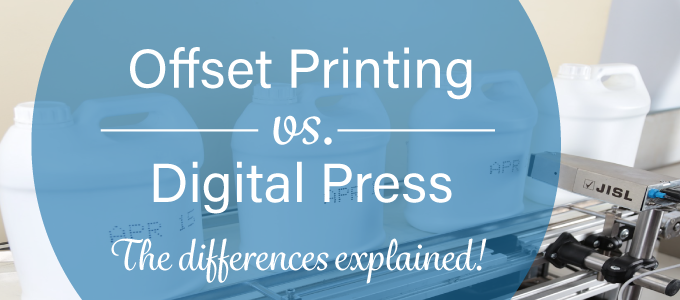Printing is not quite as simple as one may think. There are different printing processes that produce different results. Offset printing and digital press printing are the most common printing methods. What is the difference between the two? Let’s find out.
Offset Printing and Digital Press
Offset Printing Explained
Offset printing earns its name because the ink is not directly transferred to paper during the printing process. This method uses plates to transfer an image onto a rubber roll that is then pressed on a sheet of paper.
Digital Press Explained
Digital press printing does not use plates like offset printing does. Instead it uses toner or liquid ink. The ink is digitally applied instead of rolled on. Digital printing offers the power of personalization with variable data printing. An option that allows each printed piece to be personalized with data, such as a name, address, code, etc.
The Nitty Gritty
Offset Printing Advantages:
- More cost effective for printing large quantities (think hundreds and thousands!)
- Cheaper price per piece the more you print
- Highest printing quality
- Greater detail
- Accurate color reproduction
Digital Press Advantages:
- Lower setup costs for shorter runs
- More cost effective for runs less than 250
- Print-on-Demand, print only what you need
- Variable data printing capability
- Quick turnaround
- Exception quality
- Works with a variety of papers and finishes
Both offset printing and digital press printing produce quality paper pieces. You can determine which process is best for you by looking at your project’s requirements. Do you need help determining which method is best for you or your business? Call our office at 801-224-8666 or fill out the contact form below.


